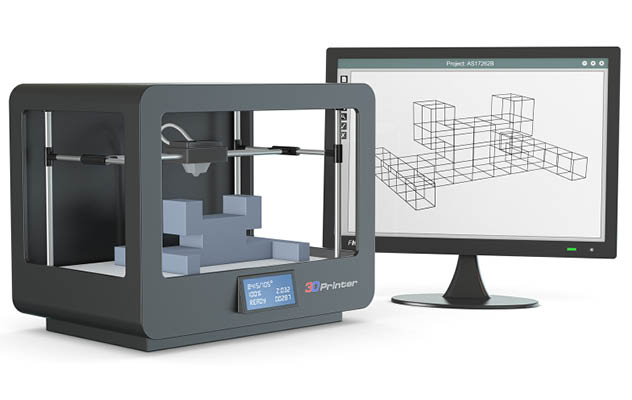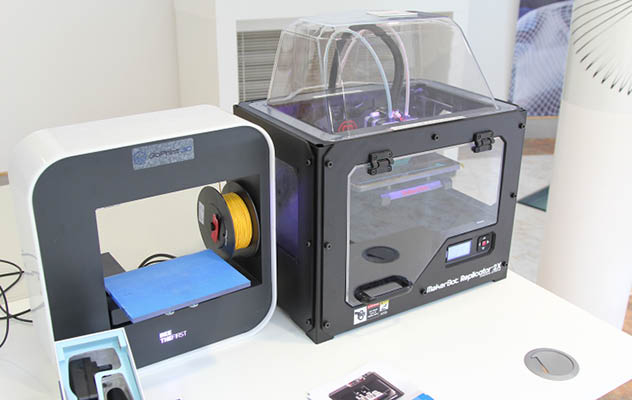
For years, 3D printing or ‘additive manufacturing’ was only a viable manufacturing option for larger enterprises, mainly due to the extortionate investment required.
But in recent years, the cost of 3D printers has plummeted, while the technology used has progressed at a rapid rate. This means that 3D printing can provide innovative and feasible solutions to a wide range of organisations and industries.
What sectors are benefitting from 3D printing? And how have they taken advantage of this revolutionary technology?
Aerospace
Thanks to Fused Deposition Modelling (FDM), which heats up and extrudes a thermoplastic filament layer by layer to create a three dimensional object, the aerospace industry has been able to prototype and build jigs, fixtures, check gauges, and end-use parts.
The benefit of parts made by FDM machines is that they don’t absorb moisture and are temperature, chemical, UV, and environmental resistant. To see how Airbus are using 3D printing on their planes, take a look at this video.
Medical
The time in which it takes to create clinical trial devices has never been quicker, as product manufacturers can develop prototypes and check everything from their form and function in-house using 3D printers.
Difficulties surrounding the production of small end-use medical devices with intricate parts have been eliminated too. Take a look at this BBC news report to see how personalised 3D printed wind pipes have saved the lives of children suffering from a rare condition called tracheobronchomalacia.
3D printing is also on hand to assist with anatomical modelling, where surgeons need to plan out complex multi-faceted procedures to predetermine the best actions and results. Take a look at this news report to see how 3D printing allowed surgeons to prepare for neurosurgery by taking a look at the blood vessels inside a patient’s brain before surgery.
Dental
“The 3D printing technology bullet train continues to accelerate the pace of change in dentistry,” says Chris Brown, Manager, APEX Dental Milling Centre
It is now possible for dentists to fabricate stone models, orthodontic appliances, delivery and positioning trays, as well as clear aligners and retainers on their computers. Seeing as everyday orthodontic procedures can be digitalised, there is no need for uncomfortable and inconvenient physical impressions either. Dentists can also get rid of bulky, physical models too. This news report has information on a 3D printing company who are using this to produce realistic models for dentist.
Architecture
With the ability to print detailed models, architects can win more contracts and help clients visualise their design in three dimensions.
For repetitive or similar projects, there is the option of printing one design as a mould, cast it, and the use the cast to injection-mould any duplicates. The cost and money saving advantages for architects don’t end there. The delicate details of small-scale models are easier to get right on 3D software programs first time around, while printed parts tend to be stronger than traditional alternatives and won’t break over time. See examples of 3D printing being used in the design of architecture.
Defence
3D printing has come in for some criticism due to the fact that it is conceivable to produce firearms or other weapons using this technology. But as far as the defence industry goes, the option to create realistic prototypes with moving parts at relatively low cost is invaluable.
Electronics
“Being able to spontaneously print a design has really changed the entire process flow of our product design,” notes Kevin Forde, Design Engineer at the Logitech Cork Design Centre. With FDM technology, electronics manufacturers can build lifelike prototypes from production-grade thermoplastics and other filament systems and ensure parts fit together perfectly.
3D printing also comes in handy for focus group sessions, as prototypes can be handed over and experienced physically, but then changed quickly according to customer feedback, sometimes within just an hour.
Automotive
Expensive and lead-time critical CNC-milled automotive parts are much more expensive to produce than in-house manufactured plastic parts, which tend to perform better technically and weight less too.
In addition to components found on cars, 3D printing can also create better assembly tools as well. For example, ergonomically designed tools will be more comfortable and safer to use on the assembly line than conventionally made alternatives.
Read a news story about the world’s first 3D printed car.
Consumer goods
3D prototypes enable industrial designers, mechanical engineers, packaging designers, graphic artists and marketing coordinators to gain a greater understanding of how their products will look and feel.
Those in the consumer goods industry can experiment with a wide range of clear, flexible, and rigid materials too.
“It is the ability to design something in the morning and have a physical representation of the concept in your hand in the afternoon that is a priceless step forward in product design,”
Steve Swaddle, Black & Decker.

So, what is the future for industry?
Once 3D printing establishes itself as not just a viable alternative to traditional methods but actually a better process of design, testing and production, it will undoubtedly become the most critical type of technology in industry.
Looking at the large number of industries that have used it so far, it’s only a matter of time before more sectors follow suit.
Written by GoPrint3D, @goprint3d
Email contact: David Whitehouse david@goprint3d.co.uk

